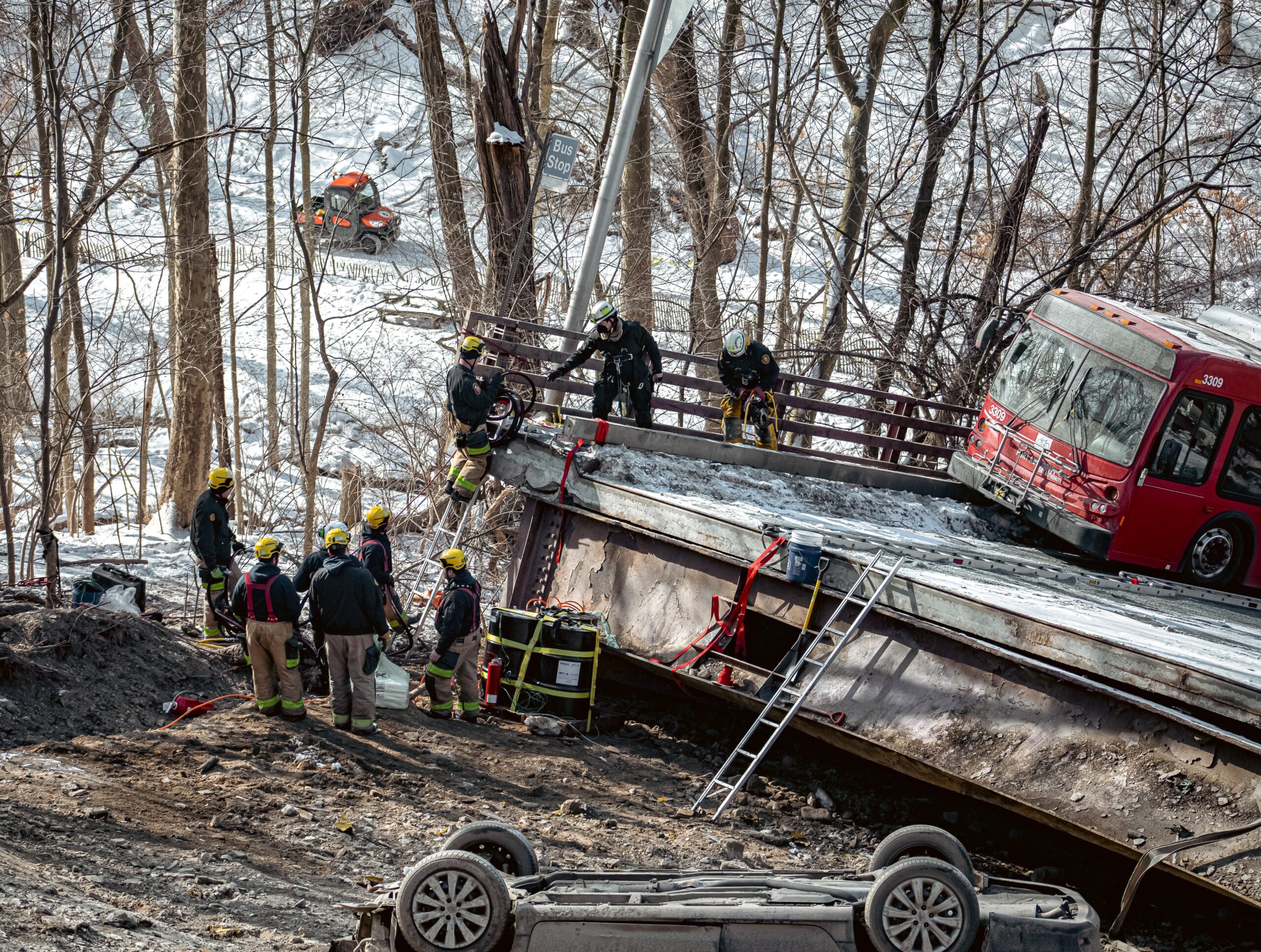Experts say a new way to assess bridges and buildings, with precise climate data and high-tech sensors, would offer better insight on safety.
Because of its outsized carbon footprint, concrete is at the center of many materials research studies: how to make more climate-friendly products, how the industry can reduce its carbon dioxide emissions by 2050, how to use less concrete in general.
Concrete accounts for between 6% and 10% of all CO2 emissions, and now a team of international scientists — from Norway and Switzerland, as well as Canada and the United States — has a different idea about how to reduce the need for concrete in bridges and buildings. They’re hoping they can hold up longer and stay right where they are.
What they’re calling for is a better and more precise way to assess fatigue, and the failure risk of steel that’s within the concrete used to build bridges and other structures. Better forecasting of the corrosion damage would lead to improved safety, but it also would mean that some structures could stay in service longer because they didn’t actually need to be replaced.
Like trees, they’d continue to sequester their carbon inputs while avoiding any disaster. Here’s why.
Chlorine-induced corrosion is the most common reason for structural failure, such as the January collapse of a Pittsburgh bridge or the catastrophic loss of Champlain Towers South last year in Miami. So nearly all of the existing forecast models used to assess concrete structures are based on this concept.
“Corrosion of steel within concrete is a complex phenomenon,” says Ueli Angst, a materials durability specialist from ETH Zürich in Switzerland. “In the generally very high alkaline environment of concrete, where the pH may be higher than 13, steel is considered passive, which means it is covered by a thin layer of protective oxides and its corrosion rate is negligibly low.”
Concrete, however, is porous. When exposed to salts, such as seawater or road salts, the chloride ions can slowly work their way into the concrete and eventually reach the steel. “At some point, the protective passive layer will be destroyed, and corrosion may start,” the researchers explain. “Depending on actual exposure conditions, corrosion may occur at a faster or slower pace.”
What the researchers propose in their paper, newly published in Applied Physics Review, is a “time and space” approach that better considers the actual context of the structure. Local data on relative humidity, temperature, rainfall or splash water, integrated with existing chloride data and other measures, would offer more precision.
“For many geographic regions in the world, high quality meteorological data are available to describe the exposure conditions,” the paper authors said. “To link these macroscopic exposure data to the in situ microclimate for specific situations,” they add, should rely on “state-of-the-art monitoring systems, possibly supported by machine learning algorithms.”
Digital sensor systems could constantly monitor the moisture, chlorides, and pH while the bridge stands. This would shift the focus to the mechanisms and factors that control the entire service life of a structure, the authors said, and advance the existing use of machine learning.
It would also change materials research, even as climate change portends an ever-accelerating challenge with moisture and related exposures that demand a shift away from the limits of chloride-based assessments.
“Despite huge amounts of research, no clear chloride threshold could be found, and the influencing factors are complex,” says Burkan Isgor, from Oregon State University. “Unfortunately, mainstream research is still in search of this threshold, which presents a major barrier to developing reliable corrosion forecast models.”
This story first appeared on Sustainability Times
© 2022 Sustainability Times.
This article is licensed under a Creative Commons Attribution-ShareAlike 4.0 SA International License.












